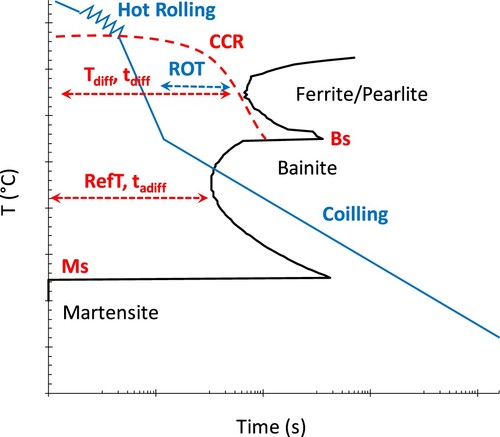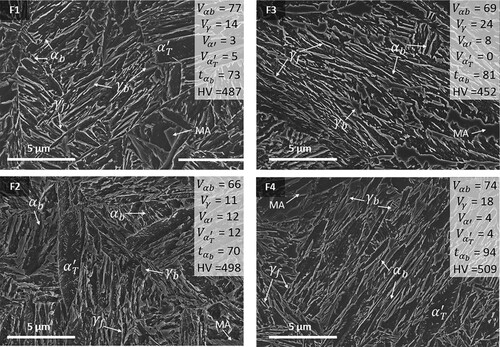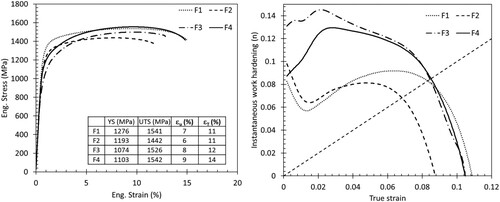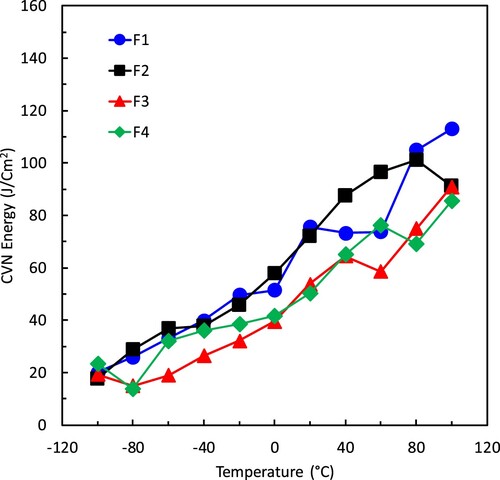Figures & data
Figure 1. Examples of the type of theoretical calculations, mainly related with bainitic transformation, and the parameters used in the design process.

Table 1. Effects of increasing the chosen alloying elements on the different calculated design parameters at a RefT of 400°C.
Table 2. Selected chemical compositions (wt.%), and experimentally measured Ac3 and temperatures, all in °C.
Figure 2. SEM micrographs and results summary on the microstructural characterisation of the hot rolled and coiled samples. ,
and MA stands for bainitic ferrite, retained austenite (blocks (b) and films (f)), tempered martensite and martensite-austenite constituent respectively.
in vol.% and
in nm.



